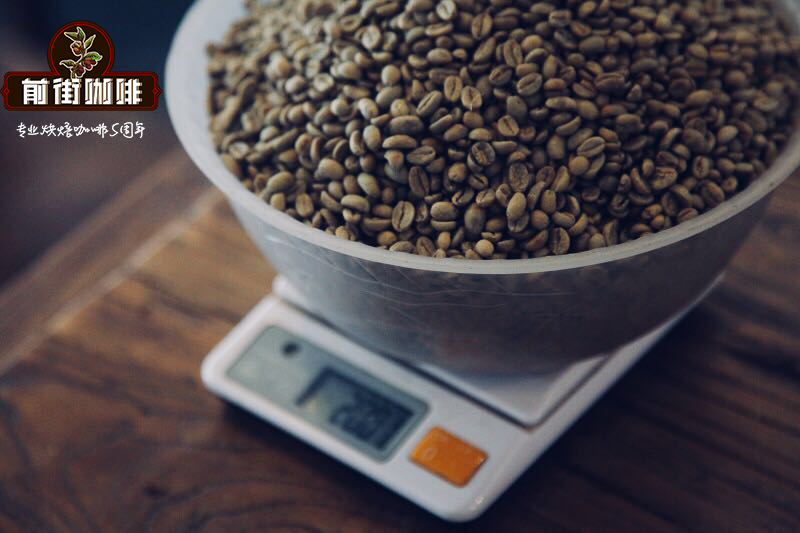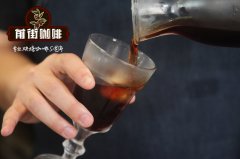How to brew Jamaican Blue Mountain Coffee? what are the famous coffee estates in Jamaica Blue Mountains?

Professional coffee knowledge exchange more coffee bean information please follow the coffee workshop (Wechat official account cafe_style)
To this day, St. Andrews is still one of the three major producers of Jamaican Blue Mountain Coffee, with the other two producing areas: Portland (Portland) and St. Thomas (St.Thomas).
In order to increase coffee production, the Jamaican Government's serious efforts were mainly to build a central coffee processing plant to facilitate coffee processing and raw bean grading, which did improve the quality but not very successfully. Canada, the largest buyer of Jamaican coffee in 1943, still could not accept such quality. In 1944, the Jamaican government set up a central coffee [water] treatment plant, where all coffee to be exported had to be processed and graded, and the quality of Jamaican Blue Mountain coffee exported from Jamaica was getting better. The Jamaican Coffee Authority was established in June 1950 and the state is officially responsible for the quality of coffee beans for export. There are currently five government-certified 100% Blue Mountain Coffee processing plants: Wallenford,Mavis Bank,Old Tavern Old Inn, Silver Hill,Moy Hall.
In eight years, Jamaica exported more than 375 tons of pure Jamaican Blue Mountain coffee.
In 1932, the production of Jamaican Blue Mountain coffee reached its peak, and more than 15000 tons of Jamaican Blue Mountain coffee was harvested.
The Jamaican Coffee Industry Committee (theJamaicaCoffeeIndustryBoard) was established in 1950 to develop quality standards for Jamaican coffee and to monitor the implementation of quality standards to ensure the quality of Jamaican coffee. The Commission awarded special official seals to raw and roasted coffee exported from Jamaica, which is the highest-level national coffee institution in the world. At present, there are six kinds of marks that can represent the origin of Blue Mountain Coffee, such as Mafis River Embankment Central Factory (MBCE), Blue Mountain Coffee Cooperative Factory (MHCCT), Portland Blue Mountain Coffee Cooperative Factory (PXXSH), Coffee Industry Association (Warren Ford), Coffee Industry Association (St. John's Peak) and Lanli (JAS).
By 1969, the situation had improved because the use of Japanese loans had improved the quality of production, thus ensuring the market. By now, this kind of coffee has reached the point of being feverishly loved.
By 1981, about 1500 hectares of land in Jamaica had been reclaimed for coffee cultivation, followed by investment in another 6000 hectares of coffee land. In fact, today's Blue Mountain area is a small area with a planting area of only 6000 hectares, and it is impossible to grow all the coffee marked "Blue Mountain" there.
Another 12000 hectares are used to grow two other types of coffee: Alpine Top Coffee and Jamaican Superior Coffee.
To this day, St. Andrews is still one of the three major producers of Jamaican Blue Mountain Coffee, with the other two producing areas: Portland (Portland) and St. Thomas (St.Thomas).
Important Notice :
前街咖啡 FrontStreet Coffee has moved to new addredd:
FrontStreet Coffee Address: 315,Donghua East Road,GuangZhou
Tel:020 38364473
- Prev

Blue Mountain Coffee is a coffee made in Jamaica. Blue Mountain Coffee is made in Jamaica.
Professional coffee knowledge exchange More coffee bean information Please pay attention to coffee workshop (Weixin Official Accounts cafe_style)
- Next

What is the annual output of Jamaican Blue Mountain Coffee? How to buy authentic Jamaica Blue Mountain Coffee?
For more information on coffee beans, please follow the coffee workshop (Wechat official account cafe_style). We have to first mention the managers of the Jamaica coffee industry board (CIB) coffee industry in Jamaica. Its establishment is of great significance to the coffee industry in Jamaica. It has set up the quality standards for Jamaican Blue Mountain Coffee, Alpine Coffee and
Related
- Detailed explanation of Jadeite planting Land in Panamanian Jadeite Manor introduction to the grading system of Jadeite competitive bidding, Red bid, Green bid and Rose Summer
- Story of Coffee planting in Brenka region of Costa Rica Stonehenge Manor anaerobic heavy honey treatment of flavor mouth
- What's on the barrel of Blue Mountain Coffee beans?
- Can American coffee also pull flowers? How to use hot American style to pull out a good-looking pattern?
- Can you make a cold extract with coffee beans? What is the right proportion for cold-extracted coffee formula?
- Indonesian PWN Gold Mandrine Coffee Origin Features Flavor How to Chong? Mandolin coffee is American.
- A brief introduction to the flavor characteristics of Brazilian yellow bourbon coffee beans
- What is the effect of different water quality on the flavor of cold-extracted coffee? What kind of water is best for brewing coffee?
- Why do you think of Rose Summer whenever you mention Panamanian coffee?
- Introduction to the characteristics of authentic blue mountain coffee bean producing areas? What is the CIB Coffee Authority in Jamaica?

